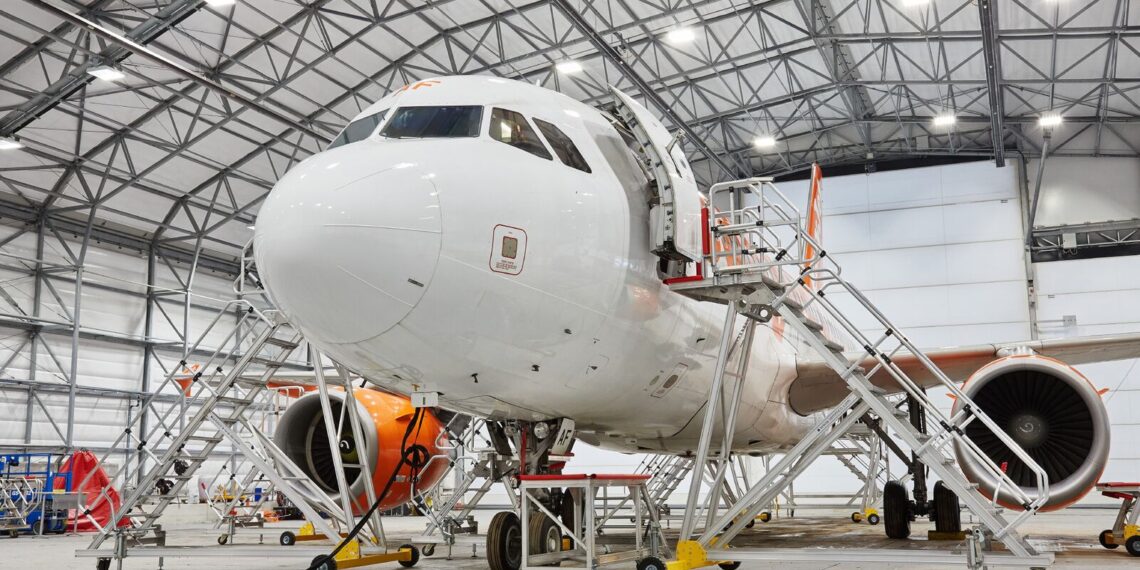Aircrafts regardless of size need regular service matching manufacturer specifications. However, service and maintenance checks differ depending on various factors including the size of the aircraft. Inspection determines the current state of the aircraft and maintenance needs after particular flying hours.
What happens during service and maintenance checks?
The frequency of service depends on how often the plane flies. So, manufacturers usually specify the number of flight hours but not timeframes to do service and maintenance checks. Annual condition checks are necessary to determine conformity to the airworthiness certificate of a plane from the manufacture issued on manufacture. Planes that fly often or after every 100 flight hours need regular service checks and maintenance.
The checks include removing the access plates and checking the retractable landing gear, related mechanism, and engine compression. Regular maintenance checks include checking critical bolts such as those connecting the propeller to the engine and replacing the engine oil. Changing oil is required after every 25 flight hours. Tires need replacing when the rubber thread shows wear and tear. Friction between the tires and airfield surface affects the lifespan of plane tires.
Types of service checks and maintenance
Preflight checks
The cabin crew performs preflight checks before flying to ensure nothing has a defect or is malfunctioning. Doing this requires having a checklist to ensure nothing is ignored. This inspection includes checking the flight control surfaces, walking around the plane, and checking fuselage components for signs of defects. The pilot can notice any deformity that might inhibit flight safety while doing the preflight check.
Tests and checks on the cabin, battery, cockpit and avionics are also part of the preflight inspection. This allows ensuring that everything functions and works properly before the flight. In case anything is amiss, canceling the scheduled flight is inevitable. Getting the plane back in the air requires professional aerospace maintenance services for appropriate diagnostics and repairs.
Annual inspection
Most aircrafts need routine inspections apart from those having a valid progressive inspection plan, experimental certificate, special flight permit, or provisional certificate of airworthiness. A mechanic having inspection authorization signs this inspection. Aircrafts that subscribe to the prescribed annual inspection period can get a ferry permit to transfer it to another facility.
The permit allows moving the plane outside the inspection period on legal grounds. Application instructions are available from the local Flight Standards District Office. The annual inspection is necessary after a year for all aircrafts regardless of their purpose. The FAR 43 Appendix D outlines the scope and details of this inspection while FAR 91. 409A has the annual aircraft inspection requirements.
100-hour inspections
According to the FAA, passenger aircrafts for hiring apart from the crew need 100-hour inspections. The checklist for the 100-hour inspections as outlined in the 14 CFR Part 91. A 10- hour grace period is granted to any aircraft that surpasses the 100-hour mark and requires transfer for inspection by mechanics in another facility. Any excess time to complete this transfer is forwarded to the next 100 hours. Equally important is for the aircraft to get an oil change after every 50 hours.
Progressive inspection
Getting a progressive aircraft inspection requires applying to the Flight Standards District Office with appropriate documentation and a maintenance plan. You designate a maintenance schedule for this inspection that adheres to the manufacturer’s standards. The progressive inspection includes checking aircraft components at particular intervals. You need a maintenance plan specifying checks for this inspection.
Owners of aircraft fleets such as flight schools and corporate airlines need a progressive inspection. This limits downtime since the aircraft is out of service for a short while. A 100-hour inspection of a plane is divided into four phases. You will now have to have the inspection after 25 hours to make 100 hours after a four-phase inspection cycle.
FAA maintenance checks
The Federal Aviation Administration recommends checks to determine the airworthiness of a plane. These checks ensure that the plane operates safely without any major disaster. The FAA aircraft maintenance checks include:
A Check –Performed after 500 flight hours. The routine check is completed during a layover at the airport to meet particular conditions.
B Check – More intensive than the A Check and performed quickly to lessen downtime. The check happens after 6 to 8 months and is completed within 1-3 days at an airport hangar. The B check might be incorporated into successive A checks.
C Check – Much more comprehensive and done every 20 months to two years. The check includes individual inspection of most aircraft components and takes about two weeks to complete.
D Check – This is a demanding check sometimes called a “heavy maintenance visit.” It happens after 5 to 6 years and involves taking the plane apart to check everything down. This allows discovering parts such as wires, hinges, fasteners, or other components that require repairing or replacing. Completing this check takes about two months and it’s quite expensive.
Wrapping up
The aviation industry puts safety as a main priority. Aircrafts need service and maintenance at particular times. Regardless of whether you have a commercial fleet or flight school, understanding the maintenance and service requirements of your aircraft are very important.

